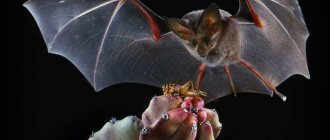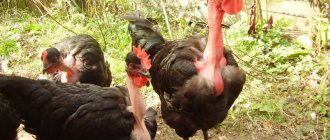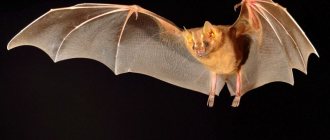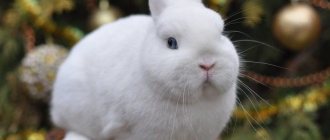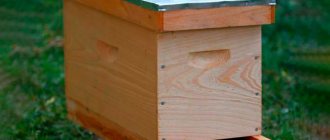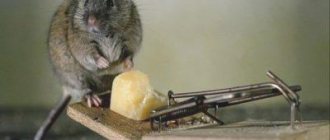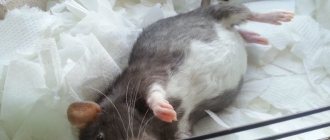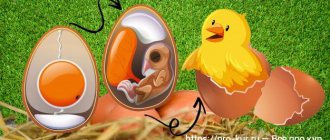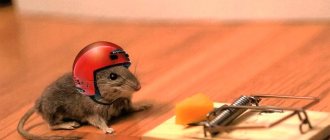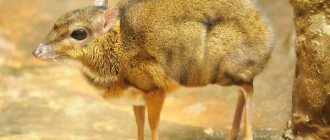Such a common animal as a mouse can be found in any climate zone of the Earth. Tropical, coniferous forests - in all areas these creatures were able to adapt. Due to their close proximity to people, they cause serious damage to agricultural properties.
In addition, they have the main advantage - laboratories where various drugs and other drugs are tested.
Based on the adaptability of mice, many people decide to keep them at home. In this article we will analyze the main aspects of keeping such a pet. We will also figure out what to feed domestic mice in captivity, and how often they should eat.
How to properly maintain it?
In fact, keeping pet mice is not a difficult task. It is easy for them to adapt to new living conditions, in addition, they are not too demanding.
With proper care, the lifespan of this creature will be approximately three years. If you get a pair of mice, keep in mind that they have a high fertility rate, and you need to immediately calculate where to put the offspring after the offspring.
Mouse health
The health and life expectancy of a domestic mouse depends on the conditions of its maintenance and care. If you choose the right cage location and proper nutrition, the rodent will live a long and happy life. The owner also needs to monitor the behavior and condition of the mouse, responding to the following alarming symptoms:
- apathy and impaired motor activity;
- lack of appetite;
- untidiness of appearance – tousled fur, loss of tufts of fur;
- blood in the urine and discharge from the anus;
- teary eyes.
If you regularly pick up the mouse and examine it, health problems can be noticed in the early stages, therefore, it will be possible to seek professional help in time.
Prevention of mouse diseases is as follows:
- Proper nutrition.
- Compliance with containment conditions.
- Quarantine for new arrivals (for 1-2 weeks with constant monitoring) and sick individuals (the duration depends on the course of the disease).
Place of detention
A rectangular metal cage is best. It should be of such a size that your pet can move around freely and have room to do so. Gaps and wooden elements in the cage structure are simply unacceptable in this case.
The bottom of the house is covered with shavings. An excellent necessary addition would be houses, pots, a feeder, and a drinking bowl. Don't forget that the mouse will certainly want to play.
Make sure your pet is protected from drafts. Also, close use of heating elements is not recommended.
Note!
- How to choose a mattress and not make a mistake? Review of the best models, size table
- Cotton blanket: advantages and disadvantages, rules of choice and care
- Review of ideas for exterior home decoration
Contents: every mouse has its own hole
Each animal needs its own special space, which it will consider “its place” - sacred and inviolable. Therefore, before you bring mice home, you should take care of where they will live. It was before, not after. Because jars and cardboard boxes are absolutely not suitable for rodents. And any move is always stressful.
Avoid aquariums as well. They are cramped, stuffy, hot, the mouse will not be able to move normally in them and arrange a secluded corner for itself. The best solution would be a spacious cage with metal bars.
Rodent cage
Be sure to make it yourself or buy a small house - a hole where the mouse will spend all day long.
Add a wheel to provide your pet with physical activity and fulfill his need for movement. For the same purpose, take care of shelves, ladders and ropes. The animal will be happy to show you its dexterity, and you will also have fun watching its amusing movements.
Sawdust for rodents
Litter is a very important element. The layer should be quite impressive - at least 5 mm. Animals use it not only for its intended purpose, but also to decorate their house, and when there are drafts or low temperatures, they burrow into it to keep warm.
The material should be natural and preferably inexpensive: sawdust, dry peat crumbs, shavings, hay. Avoid cotton wool and sand - the first absorbs odors too well and gets tangled between your fingers, and the second can become a breeding ground for lice. But something tells us that you don’t want such neighbors.
Food
Not all people who decide to have such a pet understand what mice eat at home. In fact, they do not go overboard with their food, and their diet is quite extensive. It includes corn, oats, and wheat.
Dairy products are not suitable for house mice. A varied diet of berries, fruits, and vegetables will not be amiss. Specialized food is perfect for mice. Make sure there is always fresh food in the cage.
The presence of mineral supplements and vitamins in the diet will be beneficial and have a positive impact on health. To grind down the incisors, get some tree branches, such as birch.
Nutrition
One of the frequently asked questions when purchasing this type of pet is “ what to feed decorative mice .” The answer is simple - almost everyone. Mice are indiscriminate eaters. They love these products:
- corn;
- oats;
- barley;
- corn.
Occasionally you can treat them with a small amount of seeds. Their favorite dishes are curd products, cheese and egg whites (boiled). It should be remembered that these pets, like any other living organisms, require useful substances, so you need to buy them dry food.
Due to the fact that rodents have a very high metabolism, it is necessary to constantly monitor the fullness of the feeder. To reduce the likelihood of dental problems, you should provide mice with twigs from fruit trees, they will grind their teeth on them. Under no circumstances should plants such as:
- wolfberries;
- celandine;
- bracken fern;
- nightshade;
- dope.
The elements contained in the above plants are dangerous to the health of mice and can lead to immediate death.
Taming
If you want to tame your pet, start at a very early age, but not too often. However, this must be done very carefully, otherwise the small mouse may get injured.
When a friendship begins, the pet will spend time on the shoulders, in the arms, and also, he will recognize the owner. Some owners talk about the mouse's ability to remember its name and respond to it.
Note!
- How to protect a gazebo from rain and wind in summer and snow in winter - a review of the best options
Chicken - description, types, classification, nutrition and maintenance of domestic chicken (115 photos and videos)
Fretka - lifestyle, care and character traits. 115 photos and videos tips for keeping a pet ferret
Reproduction and lifespan of ornamental mice
Another pressing question today is “ how long do decorative mice live ?” When answering this question, you need to take into account the type of mice; for example, Japanese ornamental mice have a lifespan of barely two years. But for whites this period reaches five years. Regarding the appearance of little mice, everything is simple here; reproduction occurs throughout the whole year. At the age of 35–40 days, mice are ready to breed.
At the same time, maturation in males is slightly slower than in females. Decorative mice produce litters of up to 15 babies at a time. It is advisable to bring a female together with a male only at the age of 3 months, not earlier than and after the mother has fed the babies, and again to bring her together with a male, also not earlier than 3 months.
The female needs to recover. To do this, the male is placed in another cage before birth to avoid re-fertilization immediately after birth. And he cuckoos alone for three months. Labor can begin during the day. And in the evening. And at night. Two weeks after the birth of baby mice, you shouldn’t touch them with your hands, you shouldn’t scare the mother mouse, and it’s better not to get into the cage at all. You need to feed intensively.
On the 14th day, it is necessary to accustom them to handling, but very carefully: this is the “flea” period - the mice jump like fleas and can easily slip out of your hands. As a result of the information received, it can be noted that, despite the hostility towards ordinary mice, decorative breeds simply won the hearts of people. In addition, the price of decorative mice varies from 50 to 500 rubles, which gives almost everyone the opportunity to adopt a new family member.
Kinds
Many people believe that house mouse breeds are limited to only gray or white. But breeders have bred different types of pets that have curly, satin, long or short hair. The color also varies, which can be monotonous or multi-colored.
Mice colored in the colors of chinchilla, sable and other animals are not rare exceptions. In addition, it is worth mentioning a bald pet, which gives the future owner a wider choice.
Description and features of decorative mice
Decorative mice belong to the group of rodents and are therefore quite fertile. They prefer a nocturnal lifestyle. Domestic decorative mice attract attention because they calmly go into the arms of the owner and even get joy from playing with him.
Since all mice are deservedly considered carriers of worms and infectious diseases, it to buy a decorative mouse in a special nursery or at an exhibition. This is due to the fact that it is there that there is almost a 100% probability that the rodent has received all the required injections.
Today, such animals are very popular among breeders. Thanks to their work, many types of mice have already been created, which vary in type of coat (simple, elongated, curly, satin). And, of course, one cannot help but note the varieties of colors of decorative mice:
1. Plain. Mice have one “pure” color, there are no inclusions - white, blue, red, black, gray and others.
Solid color decorative mouse
2. Tan. The mouse has one main color, on which there are tan marks of a rich red color.
Decorative mouse tan
3. Fox. The mouse has one main color, on top of which there are white tan marks.
Decorative fox mouse
4. Marked - there are spots and zones of color on the rodent’s body that create a certain pattern (ribbon, Dutch, broken colors).
Decorative mice marked
5. Variegated – against the background of the main color, bright specks of various colors are observed.
Motley decorative mouse
And this is not the entire list; there are even mice in color that resemble a Siamese cat or a chinchilla.
Siamese decorative mouse
Hairless mice are becoming increasingly popular - hair is so short that it seems as if it is absent altogether. Below are photos of decorative mice of various colors.
The photo shows a naked decorative mouse
Life activity
If you decide to breed mice, try to relocate the brood as soon as possible - there are often cases when the male simply eats them.
Keep in mind that the mouse will be active at night - during this period, food must be present. Don’t forget about clean water; without it, your pet won’t be able to live even three days. Like other animals, the house mouse is susceptible to disease.
The main signs of the disease are lack of appetite, lethargy, and rapid teeth growth. It wouldn't hurt to go to the vet if you really care about your pet.
Rules for caring for mice
Decorative mice are quite undemanding in terms of care. If they have a sturdy cage with a house and all kinds of toys, located in the right and safe place, the only thing left on the list of necessities is good nutrition. On this basis, it is already possible to engage in taming.
Feeding
You can feed mice either purchased grain feed (with the obligatory addition of a juicy component and all sorts of tasty additions), or independently prepared mixtures.
The first option is more convenient, since the owner does not have to think about the balance of nutrients in the mouse’s diet. Those owners who plan to make food themselves should remember that the finished product should contain:
- 14% proteins;
- 10% fat;
- 9% fiber.
The basis of the diet is grain feed (millet, oats, wheat, millet, barley, rye, nuts, sunflower seeds). It should be regularly supplemented with juicy foods - vegetables (carrots, cabbage, cucumbers, pumpkin, zucchini), fruits (apples, pears), berries, fresh herbs.
It is strictly forbidden to feed mice scraps from the human table. Everything fried, spicy, salty, smoked and spicy should be excluded from your pet’s diet.
Animal protein is very important for ornamental mice, which they should receive in the form of boiled eggs, boiled white chicken meat, fermented milk products, insects and larvae. Vitamins and minerals should be given to rodents either with food or dissolved in water.
Tasty additions to the main diet - pieces of black bread, dried fruits, chalk. To maintain dental health, it is advisable to give rodents young branches of willow, hazel, rowan and apple trees, and to replenish vitamin C - pine and spruce needles.
Approximately 1 tsp per day is enough for mice. grain feed and 2-3 g of succulent feed. There must be a drinking bowl with fresh, clean water in the animals’ access area.
Cleaning
Cleanliness in the cage is the key to the health and long life of a decorative mouse. Cleaning should be done regularly, at least 2-3 times a week:
- throw away the litter and change the litter;
- clean the tray, removing leftover food and other debris;
- wash feeders, drinkers and toys.
The retractable tray makes cleaning the cage much easier.
Taming
Well-fed, well-groomed and healthy mice are ready to communicate with their owner. These shy creatures quickly get used to being handled when following a few rules:
- For a mouse to feel comfortable, it must know the smell of its owner. To do this, immediately after buying a mouse, the owner should put his clean sock in the cage (first, you need to cut off his toe and wear it close to the body for a couple of days). The pet will sleep in the sock or even use it to build a nest, so over time it will get used to the smell.
- Use treats. Each time the mouse approaches its owner, it should be given a small piece of bread or other treat. Food should be given by hand, and not placed at the bottom of the cage. This way the animal will associate its appearance with its owner. In the future, you can lure your pet with sunflower seeds by sprinkling them in the middle of your palm: over time, he will trust his owner and climb onto his hand.
- Patience and calm will help establish contact. You can't just pick up a mouse and hope it gets used to it. The best solution is to place your palm on the floor of the cage and wait until the curious animal sniffs everything thoroughly and examines everything, and then becomes imbued with trust and begins to climb on your hand.
Photo of a house mouse
Mouse as a pet for children
Contents hide
It's no secret that we, adults, decide to buy a pet largely because of our children - so that they understand what kindness, responsibility and care are. On our portal, from time to time we post articles telling which animals will be most suitable in each specific case. But something else is also important: not everyone, for example, can dare to buy “large” animals - cats, dogs and others. Firstly, it can be quite expensive, and secondly, issues of complexity of care and maintenance, walking, education, training, etc., often become decisive when choosing. Therefore, many caring parents pay attention to small rodents. Let's figure out whether the well-known mouse is suitable for the role of a pet for children.
In fact, decorative mice may well be suitable for the role of children's favorites: they are often heroes of cartoons and animated films, are quite cute in themselves, are inexpensive, and their maintenance is quite affordable even for low-income families. Therefore, the children themselves choose mice for themselves not at all by chance. Let's talk about everything in order.
Mice are like children's favorites. If you have children who tinker with something for a long time and with pleasure (and you along with them), this is a completely justified choice. The mice are small in size, fit in a child's palm, and children play with them with pleasure. However, immediately warn your kids: despite its small size, a mouse can bite quite sensitively if, for example, you unexpectedly frighten it. Therefore, we would still recommend mice for calm children. To tame shy animals, you need a lot of care and patience, and few can do this. Therefore, if you need a pet solely for “cuddling”, then this may not be the best choice, although each child is different.
Your baby is inquisitive and observant - then mice will be a good gift for him: they are very interesting to watch and observe. In principle, children are also quite capable of caring for them, although you, dear parents, prepare in advance that the main burden of worries will still fall on your shoulders.
Mice are very smart and don't take up much space. It’s very interesting to watch how they playfully spin on wheels, hold treats in their paws and hilariously eat them. True, mice live for a very short time - 1-2 years maximum. Consider whether this will cause additional stress for the child.
How many mice should I buy? Try to buy several at once, preferably a couple, then your pets will be absolutely happy. Choose females if possible, as two males are likely to fight frantically. Several females will get along well with each other, you can buy a male and a female - the result will be good. Most likely, you will not be able to introduce new mice into an already established “team” - its new members will most likely be rejected. So it is better to choose pets from the same litter or those that have already lived together for some time. Please note that males can be odorous, so females are still preferable for babies. When buying a pair of different sexes, decide in your mind what you will do with the future offspring, and this is also an important question.
A few words about safety. When buying rodents for children, teach them a few lessons, preferably with examples, about the requirements for sanitation and hygiene. Make sure that children, after playing with pets, after contact with their food, after cleaning the cage, etc. Wash your hands thoroughly with hot water and soap. Of course, you, adults, should establish control over the feeding of small pets, children's games, and the frequency of cleaning the cage. Always be ready to help your children. Remember that you cannot completely rely on kids in these matters.
Mice are rodents, and that's it. They are able to chew through anything: wood, paper and plastic, so make sure that the cage is completely secure and the possibility of escape is completely excluded for small pets. Remember that mice are able to squeeze through even tiny holes. It will be very easy for a small mouse to get lost in your home, and it will be almost impossible to detect it. Therefore, try to personally ensure that the cage remains securely locked after play.
We also draw the attention of parents that the child must play with the mouse (hold it in his hand) only while sitting on the floor. Mice are very fragile; If the child is standing, and the mouse-like creatures are very jumpy, then it is possible that the animal will slip out and hit something. The mouse may not survive such a fall, remember this.
Original post: Do Mice Make Good Pets for Kids? Author: Lianne McLeod. Source and photo:
Specific substrate needs
Provide a deep layer of aspen shavings or some other suitable substrate in the cage.
Avoid cedar and pine chips due to the strong volatile oils released from these woods (especially cedar). You can also use strips of cloth, a soft paper towel, or hay. Mice will tear it up and build nests from it. Small cardboard boxes work well, although they will become shredded over time and will often need replacing. You can also use clay flower pots with holes cut into them or placed on the sides, as can pieces of PVC pipe that you can find at a hardware store. Clean your mouse's enclosure every month or two (frequent changes can be harmful).
Character and lifestyle
Since mice live in areas with different climates, they need to adapt to different living conditions, and mice have not one, but several ways of adaptation:
- Active throughout the year. These animals make provisions for a rainy day all year round.
- But they can do without supplies if their place of residence is shops, residential buildings or food warehouses;
- Seasonal migrations - closer to winter, mice migrate from their natural habitat to places that are located near human habitation, and in the spring they move back;
- In order to maintain optimal body temperature in hot or cold seasons, the mouse must move too much, and for this it absorbs a lot of food.
The entire life cycle of this rodent depends on body temperature. If a mouse does not move in winter, it will freeze, and if it does not move in summer, during the hot period of the year, then the body will produce excess heat, which can kill the animal.
Therefore, the entire life activity of a mouse consists of the fact that it moves - it gets food for itself, eats, engages in mating games and raises offspring. The main movement in mice begins with the onset of darkness. It is then that they begin to look for food, set up their home, that is, they dig holes, and protect their area from their fellow tribesmen.
Do not think that a tiny mouse is a cowardly creature. In the process of protecting her home, she can attack an animal that is much larger than the mouse itself. If a mouse lives in a place where there is constant twilight, then it is more active, and it has to rest less and in periods.
But if there are people constantly in the habitat of mice, then the mice are not too “shy” - when the room is quiet, they can go out in search of food during the daytime. However, if a mouse is kept as a pet, then it has to adapt to the owner's regime. These animals live in groups, because a single individual will not be able to make large enough reserves, find food and detect danger in time.
True, life in a mouse family is not always cloudless - serious conflicts also occur, which, as a rule, break out due to lack of food. Females are much calmer than males; they even often breed offspring together and jointly raise them.
A mouse is a wild animal and obeys the laws of its family. Its activity also depends on what place a particular animal occupies in this family. It is the leader who determines the periods of wakefulness and rest for his subordinates. In addition, weaker mice try to dig holes and get food for themselves while the head of the family is resting, so as not to catch his eye once again.
Varieties
House mice have a huge number of species. The most famous include:
- Little ones. Such rodents are the smallest mammals in Europe. They are red or brown. The abdomen of these pets is white or gray. The animals grow up to 13 cm in length. They are distinguished from other breeds by the shortened shape of their muzzle.
- Gerbils. Externally, this species resembles chipmunks. They are characterized by a short tail and a relatively large body when compared with other similar rodents.
- Needle mice. Pets of this breed may remind you of hedgehogs. The shape of their fur is like needles. It is this feature that greatly distinguishes these animals from other types of rodents. In addition, they are distinguished from other pets by the appearance of their eyes. They are black in color and have a round convex shape.
What to feed a mouse
Ornamental mice feed mainly on grain mixtures, including seeds of herbaceous plants such as wheat, oats, peas, barley, cake, millet, sunflower seeds, and flax. Can be supplemented with nuts.
Oilseeds should be present in an amount of no more than twenty percent of the mixture in summer and thirty in winter, otherwise the risk of obesity is high. Too much legume seeds can also lead to obesity, although their presence in the diet is desirable. Mice can be pampered with berries, fruits, especially apples, dried fruits, carrots, cabbage, potatoes, beets and cucumbers. In addition to all of the above, feeding mice porridge is common. Oatmeal, rice and millet porridge are suitable. It is important that the porridge is cool and contains grains that have been previously cleared of impurities.
IMPORTANT You should not give mice chocolate, spicy, smoked, salty, sweet or fatty foods. This can cause them various digestive disorders and, in some cases, death.
It is vital for mice to have their incisors ground down from time to time . Small branches of trees and shrubs are well suited for this purpose, the main thing is that they contain bark. Almost all plants are suitable for this, except lilacs and conifers.
IMPORTANT Lilac is poisonous to ornamental mice.
If preparing food yourself is difficult, then pet stores sell ready-made mixtures and other nutritional components for mice.
Habitats and lifestyle in nature
Mice live on all continents of the globe, except Antarctica. As a rule, they live in deciduous and coniferous forests, steppe zones, mountains, tropical thickets and swampy areas. They also settle in people's houses.
These rodents make nests for themselves. For this they use dry grass stems. The above mammals are capable of creating a complex system of underground passages in order to live in it. They often occupy existing burrows. Species of these animals that live in swamps can swim, unlike those that live in other areas.
Also learn how to tell a mouse from a rat.
In Russia, mice are common. They do not live only in the northern part of Siberia, in the mountain tundras, on Taimyr and near the Lena and Yenisei rivers.
